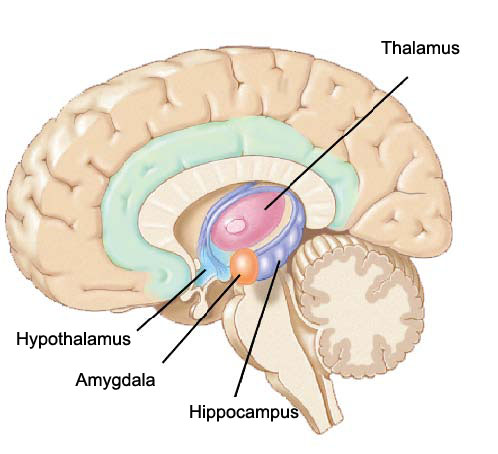Cranial nerves are important for sensory and motor integration. How many cranial nerves do we have?
12
Veins are blue and arteries are _____.
Red
This diagnosis consists of having fluent speech that at times can be difficult to understand because of neologisms and paraphasias. In this diagnosis motor speech is intact, but auditory comprehension is compromised.
Fluent/Wernickes Aphasia
The WHO requires that we not only assess structure and function of the communication system, but also the patient's ____ __ ____.
Quality of Life
When creating goals for your client it is important that you consider both the _____ and their ________(s).
Client and Caregivers
The mint green structure depicted here is responsible for sending information both from posterior to anterior parts of the brain, and from the left hemisphere to the right. What is this structure?

Corpus Callosum
This artery (R2) is responsible for sending blood through the neck to both external and internal head/neck structures. What is this artery?
Common Carotid Artery
This diagnosis consists of having afluent speech that is effortful and/or forced. In this diagnosis motor speech is impacted, but auditory comprehension is rarely compromised.
Brocha's/Non-fluent Aphasia
This norm-referrenced standardized assessment is considered the "gold star" for Aphasia assessments, and can be used for other neurogenic language disorder assessments.
Western Aphasia Battery (WAB)
In this dementia intervention, you create memory books of special events and possibly have pictures of important people with their names for the client to refer to ask their memory declines. Name this therapy.
Reminiscense therapy
This dark purple structure is responsible for much of our memory. What is this structure?

Hippocampus
This artery (R3) is responsible for sending blood to soft structures of the face including the nose, jaw, and tongue. What is this artery?
External Carotid Artery
In this diagnosis, patients typically have hemi/visual neglect of the left side, and many also suffer from anosgnosia.
Right Hemisphere Disorder/Damage
This simple drawing task can identify difficulty with executive functioning, hemi/visual neglect, and other potential targets related to TBI, Dementia, and RHD.
Clock Drawing Task
In this intervention, you support your client by training their caregivers or loved ones. This intervention is appropriate for both TBI, Aphasia, and more.
Communication Partner Training (CPT)
This structure, also known as the "little brain," is responsible for integrating sensory, visospatial, and motor information to make slight adjustments for fluid motion. Identify and name this structure.

Cerebellum
This artery (L3) is responsible for sending blood to important cerebral arteries and is 1 of 2 supplies needed for neural function. What is this artery?
Internal Carotid Artery
In this sudden onset, patients usually are disoriented and have difficulty with attention initially, but may regain abilities as time progresses.
TBI
This analysis utilizes a question meant to create a long narrative. The response is then analyzed for content information units. These units are then measured to find a percentage or possibly the length of time it takes per content information unit. This is vital for functional communication skills. Name this analysis.
Discourse Analysis
In many neurogenic language disorders (TBI, Aphasia, Dementia), there are typically two main approaches _________ and ________. The first targets bringing skills back up to where they once were. The second targets supports for the loss of those skills.
Restorative and Compensatory
This structure, also known as the "relay station" for sensory and motor information, sends sensory information to the correct location in the cerebral cortex and receives motor information to send down to the lower motor neuron. Identify and name this structure.

Thalamus
This neural blood supply supported by the internal carotid artery and vetebral artery, links together through basilar artery to create the ______ ___ ______.
Circle of Willis
In this diagnosis, symptoms became more noticable as time went on. The symptoms of significant memory loss progressed after a diagnosis of alzheimers disease.
Dementia
CLQT
This therapeutic intervention focuses on verbs. The goal is to support word finding difficulties in order to create longer utterances. The structure is within the English Subject-Verb-Object.
VNest or Verb Network Strengthening Treatment